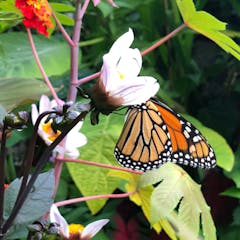
Articles on Urban gardening
Displaying 1 - 20 of 29 articles

Many gardeners worry these large larvae might damage plants. But before you squish them, read this.

Urban farming is an ancient tradition in Bamberg, and the gardeners’ district is an integral part of the World Heritage City, growing food, promoting sustainability and fighting climate change.

Lead levels in backyard hen eggs are often much higher than in eggs bought in the shops. A new study of soil lead, chickens and eggs locates the high-risk areas in our biggest cities.

Gardens require huge labour, and outcomes like health, well-being or food security are affected by systemic barriers people face in cities and schools.

Publicly accessible gardens are an essential part of our food system. It’s important for policymakers to understand that growing food in city gardens is central to health, food security and culture.

Really, how productive is the average home vegetable garden – and will it leave you hungry? It largely depends on space, soil and gardening skills.

Up to 85% of the nectar available to pollinating insects in a city comes from gardens. What we plant – whether in an allotment or a window box – can make a huge difference.

Clean bird feeders and grow insect-friendly plants.

Plants support human health not only in terms of providing food, oxygen and shade. Our relationships with plants facilitate political decisions and actions that support health in the city.

The earth our towns and cities are built on is teeming with potential. It is under threat too

New research suggests that residential gardens are the source of 85% of the nectar produced in towns and cities.

An estimated 1 in 4 US children have trouble getting enough to eat at least sometimes. We asked four scholars for their insights..

Two planters added to bare front gardens had as much benefit as eight weekly mindfulness sessions.

Turning food scraps and yard trimmings into compost improves soil, making it easier for people to grow their own food. City composting programs spread those benefits more widely.

Victory gardens were popular during wartime, and have made a comeback during the current pandemic.

The sight of empty shelves has led some Australians to look for alternative ways to feed themselves and their families. This is what history can teach us.

Home gardens have shifted through necessity, from suffragette protest to hippy communes. Is coronavirus isolation the shove you need to start yours?

At the peak of a summer heatwave in Adelaide, an aerial survey of land surface temperatures reveals just how much cooler neighbourhoods with good tree and vegetation cover can be.

You probably know about the collection of microorganisms that live in, on and around us. But did you know that not everyone in society has equal access to them? That needs to change.

When so much of the green space in our cities is in the form of nature strips, current restrictions on plantings are denying us the many social and environmental benefits of more diverse greenery.
